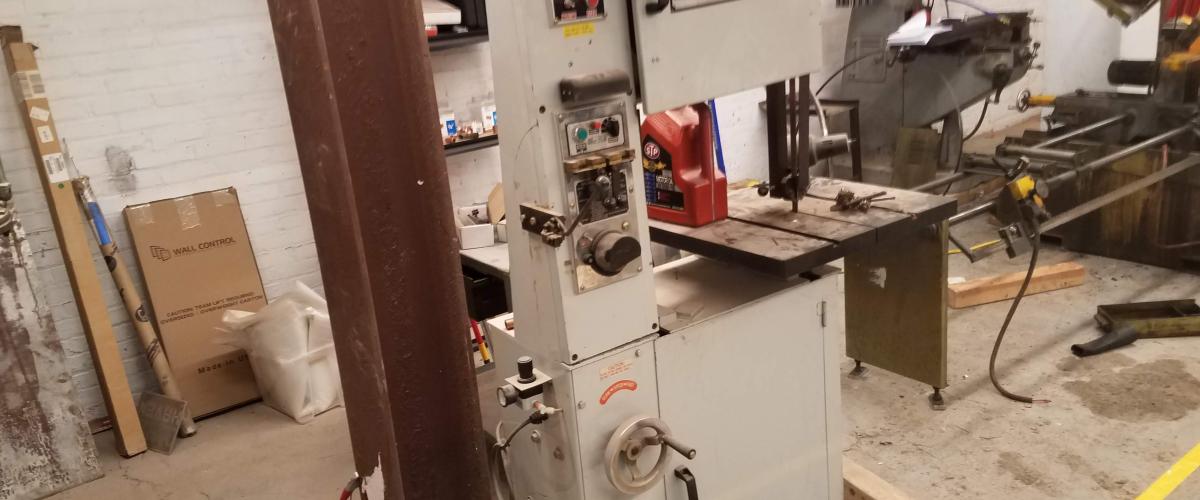Prior to use:
• Evaluate the work piece material type and appropriateness of the saw, saw blade, and cutting
speed.
• Determine the location and angle(s) of cuts required. Mark lines clearly on the work piece.
• Determine the required fixturing/tooling/clamping/cutting stops/supports needed.
• Prepare a cutting plan.
o Determine if relief cuts are necessary to remove the blade from the work piece. These
are cuts that cut through scrap portions of your cut out to give a better angle on
accessing a section of the work piece. It is safer to make a lot of relief cuts and cut a
tight curve in short sections than to try and make one long, inaccurate cut.
o Determine if push sticks/blocks are needed to keep all body parts out of the path of the
blade.
• Obtain personal protective equipment (safety glasses /shields) hearing protection and remove
all loose clothing, jewelry and securely tie back all long hair/beards.
At the band saw:
• With the tool off inspect the tool. Look for damage, missing guards, and blade
condition/tension/tracking. Look for missing teeth.
• Inspect the work area and remove any obstructions and trip hazards.
• Adjust guides and guards such that they are no more than ¼” above the work piece. The blade
should be 1/32” from the rear roller bearing behind the blade (see Diagrams/Illustrations).
Cutting process:
• Turn on the band saw and listen for unusual and unsteady sounds. If clicking or ticking is heard,
shut down the saw and seek supervision.
• Let the blade reach full speed before attempting the cut.
• Start cutting – apply steady pressure against blade while following your cutting plan- do relief
cuts first.
• Use push blocks, miter guide or appropriate scraps of material in order to maintain a safe
distance from the blade.

